Saskatoons
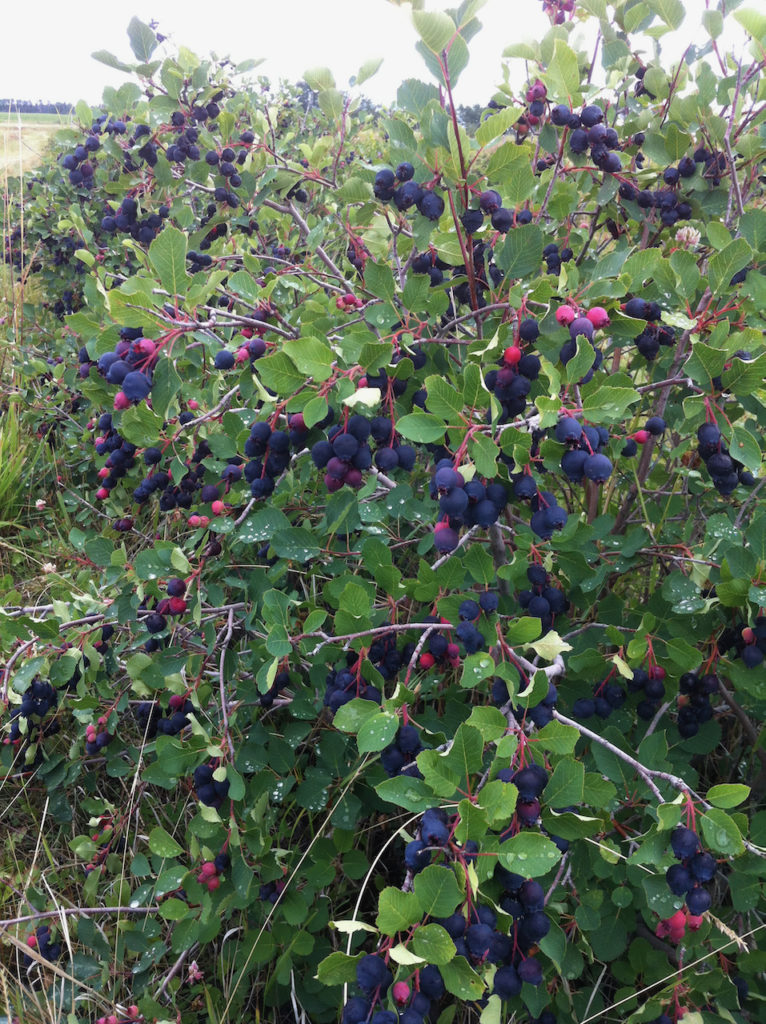
As our name implies, saskatoons are a big part of Saskaberry Ranch. Saskatoons are fruit native to the prairies, and as such are well loved by both people and animals. A common question we are asked is “How do you keep the birds out?” The only answer we have is “Plant enough to share.” Saskatoons are a highly nutritious fruit and I’m sure if they were native to somewhere other than western Canada, they would be labeled a super food. Their cancer fighting ability is well know, (https://purplefit.ca/nutrition-facts/) and despite all their health benefits, they still taste great. They are a great and very easy addition to many recipes, and go well with many other fruits. Initially we attempted to grow them organically, but after successive crop failures due to fungus and insects, we have been forced to spray them during their blooming season before there is fruit. Hopefully someday we are able to make some modifications to enable us to grow organically, but so far we have not found a solution. Saskatoon season generally starts around July 15th– 20th, and if the weather cooperates we can pick for about 3 weeks. An early or late spring can vary our season significantly so we recommend checking our upick conditions before heading out. We sell our saskatoons as you pick, we pick, or after the season is finished as frozen. Our fruit is hand picked, and if you enjoy picking fruit you are welcome to come pick for us and either get cash back, or your purchase total reduced.
Raspberries
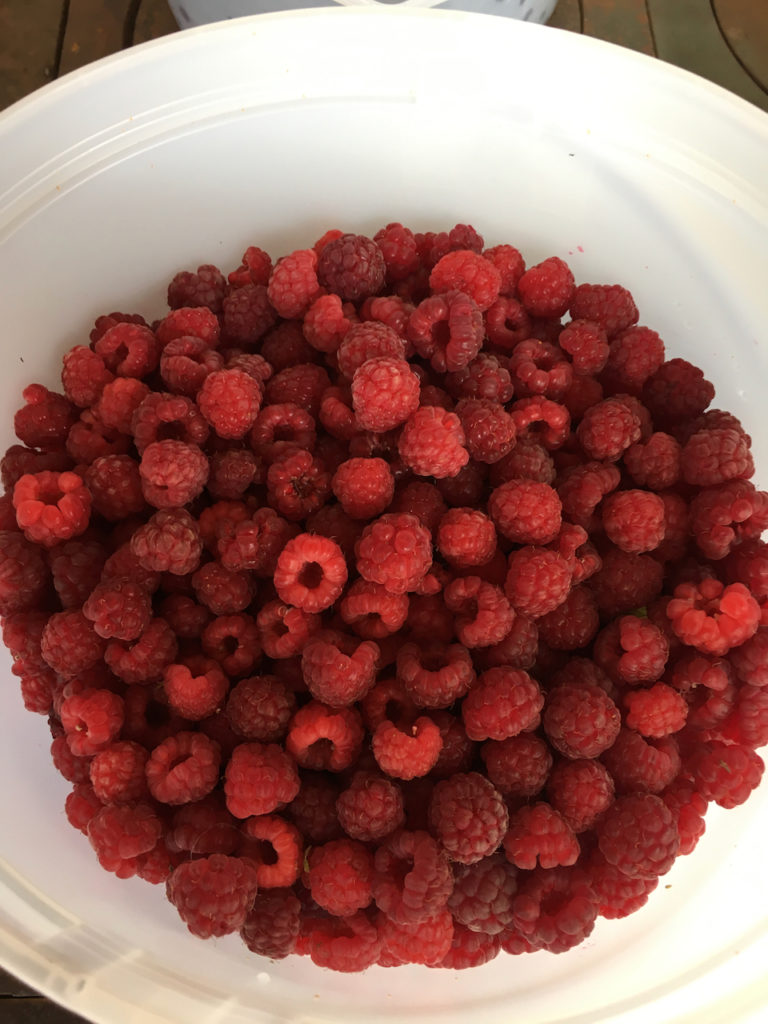
The other crop we planted in the first year was Raspberries. These have proven to be significantly more challenging. Due to our unique growing season and the effects of winter chinooks, just attempting to commercially produce raspberries between Red Deer and Calgary has put us in the “you’re crazy” category. But because our raspberries taste so great and my whole family loves them so much we keep trying. Currently we have a couple of rows that refuse to grow very tall and produce some fruit, but we have a second patch started that will hopefully be productive soon. We have had a great productive raspberry patch in the past, and we intend to have one again.
Strawberries
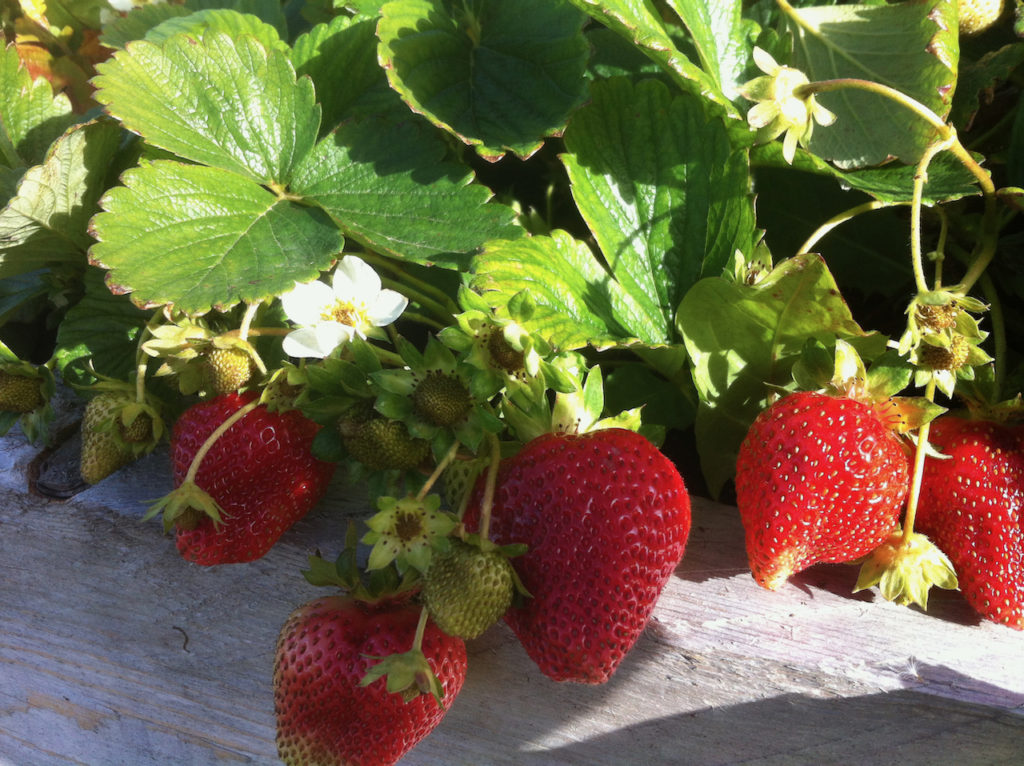
Sorry, we are not producing strawberries this year due to price increases and our difficulty in growing them. We recommend The Jungle instead. The next crop we planted was strawberries. Initially we did not intend to grow strawberries, due to the labour involved, but because of numerous requests we started growing strawberries. We have grown strawberries with various growing methods with varying levels of success. We are currently growing strawberries using a plastic mulch to reduce water usage and reduce weed pressure. And as anyone who has visited our strawberry patch can attest, as we do not spray our strawberries, we need all the help we can get with weed suppression. Also, as we live in one of the top two locations in the world for hail, and we live just west of the base for the insurance industry’s hail suppression program where they try to make it hail on us instead of the urban areas, hail is a constant risk for us. To counter this, we have been experimenting with growing strawberries in high tunnels, aka greenhouses. This protects the strawberries from adverse weather and also enables us to produce strawberries well into the fall without risk of frost or snow. This is still in the experimental phase, but we are hoping to scale up in the near future. With these two growing methods of strawberries, our strawberry season is roughly late June to mid July and the second crop gets going early September. Again the weather can shift those dates a bit, but if you want a phenomenal strawberry, you need to try some of our fall strawberries, you will have a hard time finding a better tasting strawberry.
Sour Cherries
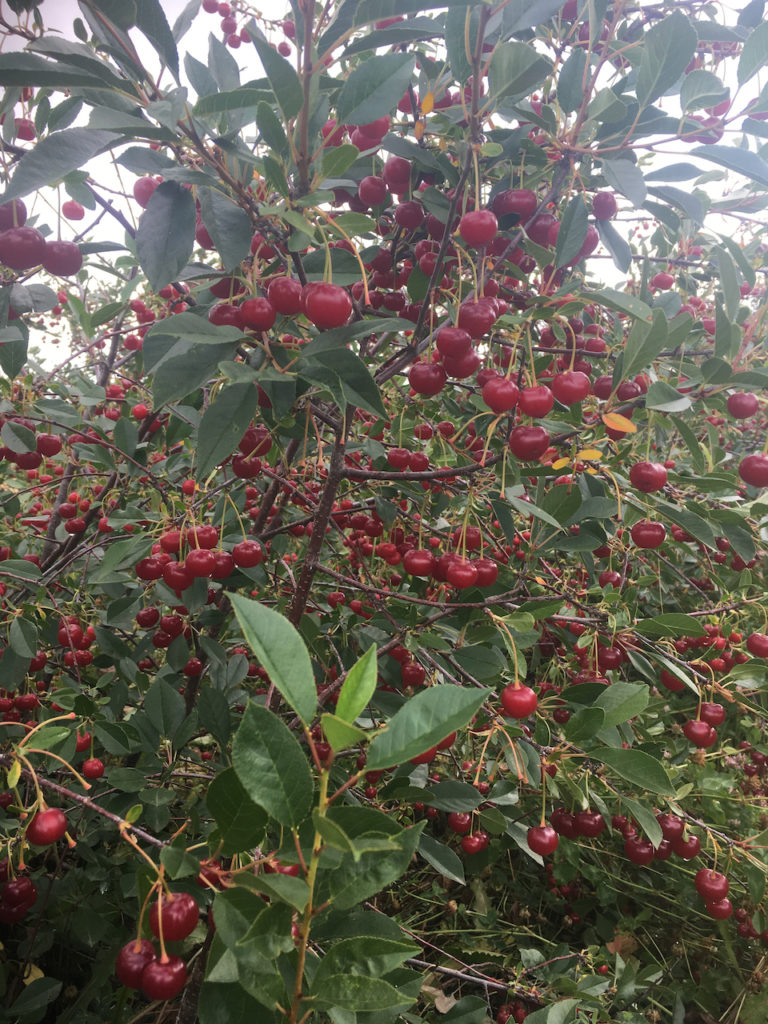
A relatively new crop both to the prairies and our farm are our sour cherries. Though sour is in their name, they actually have as much sugar in them as a sweet cherry and many people love eating them fresh. As a new crop to the prairies, they do not have any natural pests and so they can be grown organically which is great, as most commercially grown sour cherries are grown where spraying is a mandatory and frequent occurrence. Another amazing thing about these cherries is that they are able to be frozen and still retain their red color, so you can freeze them in the summer and use them in the winter without them turning that brown color. We love them so much that we are in the process of expanding our planted area. They normally are ripe starting early August, but the longer they stay on the bushes the sweeter they get. As they are so well loved, they are usually picked before they can reach peak sweetness.
Rhubarb
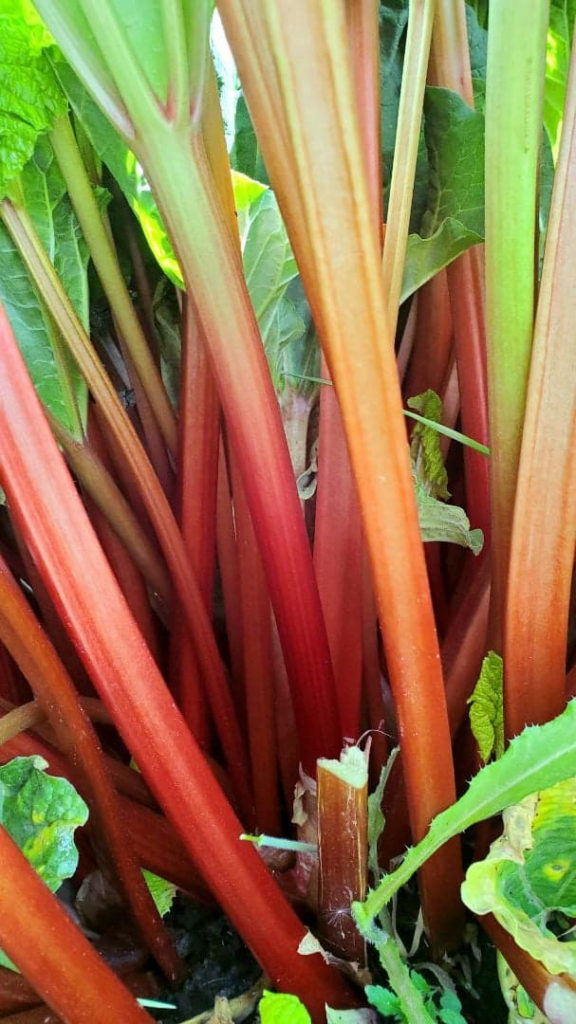
Another lesser known fruit we grow is rhubarb. A former staple of every prairie garden, this is a great fruit. One of the first things growing in the spring, rhubarb blends great with other fruits and also tastes great on its own in pies, jam, crisps and juice. Generally we have rhubarb ready from mid June all throughout the summer. Though it freezes well, we are usually to busy during the summer to harvest and freeze it so we do not have much in storage at this time.
Cherry tomatoes
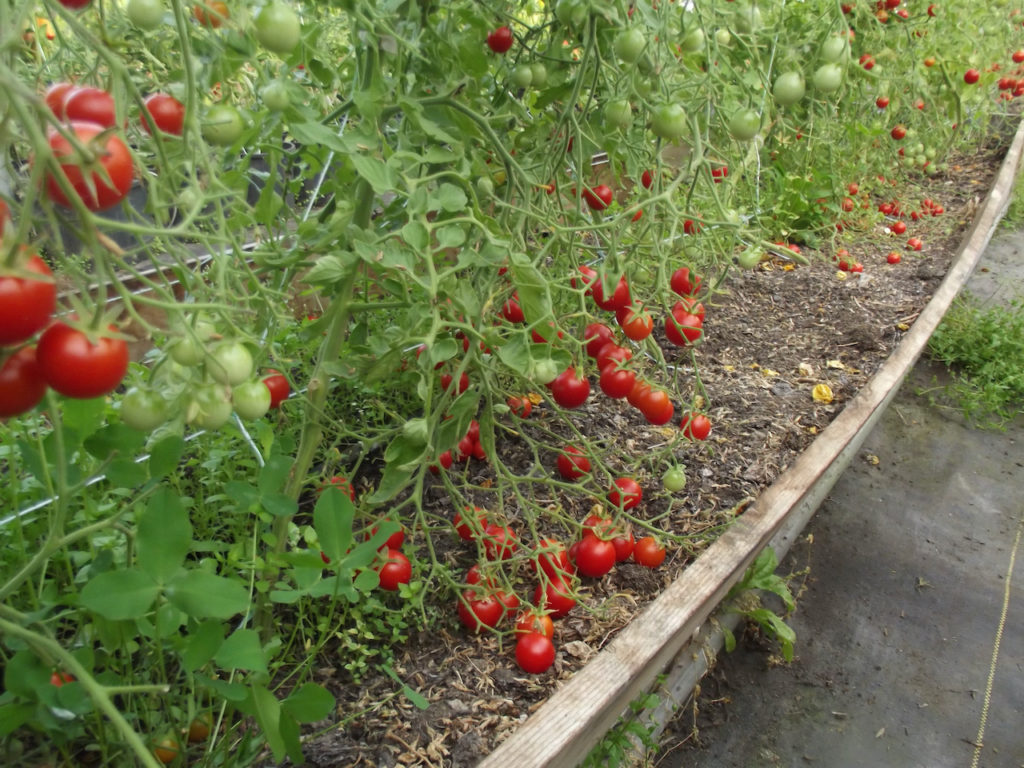
One of the most common comments we hear about our cherry tomatoes is that they are the sweetest tomato the person has ever tasted. They come with the disclaimer that if you eat them enough, you will only enjoy eating our cherry tomatoes. We start them from seeds in February and then transplant them out to the greenhouse later in the spring. And while we do not fully understand it, there must be something magical about Saskaberry Ranch, as the seedlings that we start and are grown elsewhere do not taste as good as the ones grown here on Saskaberry Ranch. Generally speaking, the first ripe ones start early August and we are usually picking them until Thanksgiving. And again, we are not sure why, but with our management practices we are able to grow them naturally as well, with no sprays.
Wheat Berries
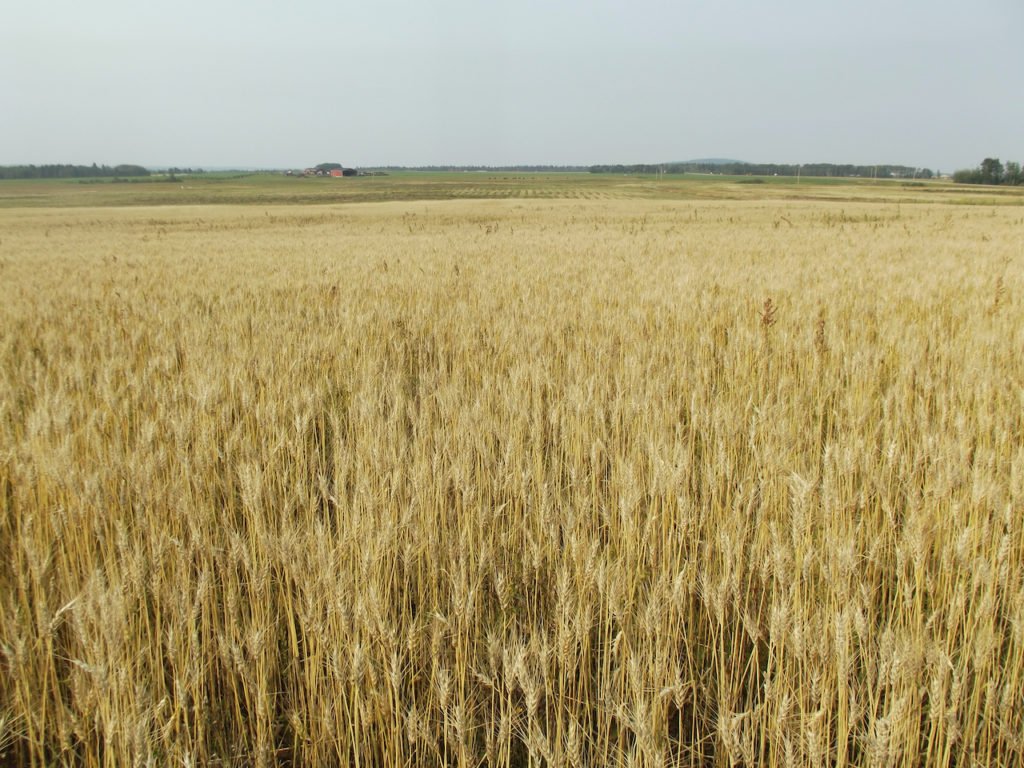
We also grow Wheat Berries, or as more commonly known, milling wheat. It is a general purpose milling wheat that we grow organically. We have a small field that we rotate between growing forage for our animals and allowing them to naturally fertilize it and do the weed control and the other years we plant a wheat crop. The wheat is cleaned and ready to be eaten, whether as an additive to soups and stews, a filling breakfast cereal, or we have a mill and it can be milled into flour at no charge. The flavour of freshly milled actual 100% whole wheat flour with nothing added or removed, is amazing. And while this is not a scientific claim, we have had guests to our farm who were gluten intolerant be able to enjoy our wheat, people allergic to strawberries enjoy our strawberries, allergic to eggs enjoy our eggs, and allergic to meat enjoy our chicken. So maybe there is something magical to Saskaberry Ranch.